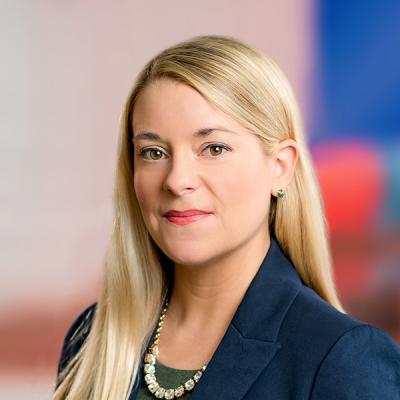HHS Proposes Sweeping Changes to AKS and Stark Law, Part 6: Proposed Changes to the AKS Related to Beneficiary Inducement
As reported previously, the Department of Health and Human Services (HHS) recently published two proposed rules that seek to implement wholesale changes to the regulations that interpret the Anti-Kickback Statute (AKS) and the Physician Self-Referral Law (commonly known as the Stark Law). This final post in our blog series focuses on a proposed new safe harbor that would protect patient engagement and support arrangements designed to improve quality, efficiency of care, and health outcomes. The HHS Office of Inspector General (OIG) is also proposing modifications to the existing safe harbor for local transportation and a new safe harbor for remuneration provided in connection with certain payment and care delivery models developed by the Centers for Medicare & Medicaid Innovation Center or by the Medicare Shared Savings Program. Lastly, the OIG is codifying into the regulations an existing statutory safe harbor for Accountable Care Organization (ACO) beneficiary incentives and an existing statutory exception to the Civil Monetary Penalty (CMP) rules on beneficiary inducement for telehealth technology related to in-home dialysis services.
Patient Engagement and Support Safe Harbor
This new safe harbor would protect certain patient engagement tools and support services furnished by value-based enterprise (VBE) participants to patients in a target patient population in order to improve quality, health outcomes, and efficiency. (For more information on VBEs, please see our first blog post in this series on value-based arrangements.)
Interestingly, the OIG chose to implement protection for patient engagement tools and support services as an AKS safe harbor, rather than as an exception to the CMP rules on beneficiary inducement. Because one of the exceptions to the beneficiary inducement provisions of the CMP is an exclusion of practices protected by safe harbors to the AKS, this proposed safe harbor would protect certain patient engagement tools and supports for both AKS and CMP purposes. In recent years, the OIG has opted to protect certain types of items and services provided to patients as exceptions to the CMP rules, but these exceptions only protect arrangements for CMP purposes, and the OIG has made clear that parties structuring their arrangements in reliance on these exceptions still need to be mindful of the AKS. The OIG is proposing broader protection for patient engagement tools and support by removing barriers presented by both the AKS and CMP rules.
The OIG does not provide many examples of the types of tools and supports that could be furnished under this safe harbor, and, in fact, the OIG is seeking comments on this topic. However, the OIG did mention a smart watch that monitors a patient's health and transmits health data to the patient's physicians, a smart pill bottle that dispenses medications to a patient at preset times, and a parking voucher or free childcare during medical appointments.
Of note, this safe harbor, as proposed, is very limited because tools and supports can only be furnished by a VBE participant, which, by definition, excludes pharmaceutical manufacturers, distributors, suppliers of durable medical equipment, prosthetics, orthotics, or supplies (DMEPOS), and laboratories. There are also detailed compliance, monitoring, and oversight requirements in order for an arrangement to qualify as a VBE that may be difficult to implement in practice. This safe harbor thus may have limited utility for the majority of health care entities wishing to provide patient engagement tools and supports. Fortunately, the OIG is considering whether to remove the requirement that the offeror be a VBE participant and what additional safeguards may be appropriate to offset any risks associated with opening the safe harbor to more types of offerors. However, the OIG is likely to continue to exclude manufacturers from this safe harbor given the OIG’s stated concern that manufacturers may inappropriately use patient engagement tools and supports to market their products and divert patients from more clinically appropriate items or induce demand for medically unnecessary items and services.
The OIG also proposes to impose the following requirements under this safe harbor:
- The tool or support must be provided to patients in a target population. The VBE or VBE participant can define the population, which is not limited to federal health care program beneficiaries. The OIG recognizes the difficulty posed in situations where a VBE’s beneficiaries are identified retrospectively, or on a preliminary prospective basis, with an ACO being one example. The OIG seeks comments on the challenges posed by this requirement.
- Limitations on the types of tools or supports. The tool or support is limited to in-kind preventive items, goods, or services such as health-related technology, patient health-related monitoring tools and services, or supports and services designed to identify and address social determinants of health (i.e. health-related non-medical items, goods, or services, such as food, shelter, safety, etc.). The tool or support also must be directly connected to coordination and management of the patient’s care, medically necessary, and recommended by the patient’s licensed health care provider. The OIG is considering a requirement that the licensed health care provider certify in writing that the items or supports are recommended solely to treat a documented chronic condition, under penalty of criminal law. The item or support also must advance one of the following goals: (i) adherence to a treatment or drug regimen, (ii) adherence to a follow-up care plan, or (iii) management of a disease or condition.
- Cash or cash equivalents, such as gift cards. Interestingly, the OIG is considering whether to protect patient incentives and supports in the form of cash and cash equivalents, such as gift cards. Given the OIG’s longstanding concern that cash payments to beneficiaries pose fraud and abuse concerns, it is unlikely that the OIG will decide to allow cash payments under this safe harbor. Gift cards and other cash equivalents, on the other hand, could potentially be protected under this safe harbor once finalized. In both the proposed rule and recent OIG advisory opinions, the OIG recognizes that the provision of gift cards to patients can serve as useful incentives for patients to attend preventative and primary care appointments and adhere to behavioral health or substance disorder treatment plans. For example, in OIG Advisory Opinion No. 12-21, the OIG approved an arrangement in which a health care provider offered patients $20 grocery store gift cards as an incentive to visit the provider for a screening or clinical service. Similarly, in OIG Advisory Opinion No. 08-14, the OIG approved an outpatient substance abuse treatment provider’s provision of $5 to $10 gift cards, not to exceed $200 per month in the aggregate or last for more than three months. The gift cards served as motivational incentives for patients to attend planned events, actively participate in counseling sessions, and provide drug-free urine samples. The OIG is also considering protecting cost-sharing waivers or reductions offered as part of value-based arrangements under this safe harbor.
- The aggregate retail value of the tools or supports is limited to $500 annually per patient. This amount is relatively high, considering the exception for gifts of nominal value is limited to $75 annually per patient, and OIG Advisory Opinions 12-21 and 08-14 approved gift cards limited to $20 and $5 to $10 per patient, respectively. However, many useful tools and supports (i.e., smart watches) may exceed this amount. The OIG is seeking comments on whether the $500 limit is adequate or excessive.
- Additional requirements. The tools or supports must be (i) be provided directly to the patient by the VBE (and not directly or indirectly from a non-VBE participant); (ii) cannot be provided for purposes of marketing or patient recruitment; (iii) cannot be provided, if the healthcare provider knows or reasonably knows it will be diverted or resold; and (iv) must be supported by materials and records showing compliance with this safe harbor.
Further, the OIG is seeking comments on whether to include the following additional conditions not yet built into the proposed safe harbor:
- Prohibition on cost-shifting. The OIG may include a condition prohibiting the offeror from writing off as bad debt or otherwise attempting to shift the cost of the tool or support onto any federal health care program, other payors, or individuals. Because this factor is fundamental to many existing safe harbors and taken into consideration by the OIG in advisory opinions, we expect this condition to be incorporated into the finalized safe harbor.
- Consistent provision of patient incentives. The OIG may require that the tools or supports be offered to the entire target patient population. We expect commentators to object to this condition as it could ramp up costs substantially.
- Monitoring effectiveness. The OIG may require that the offeror or other VBE participant monitor the effectiveness of the tools or supports.
- Retrieval. The OIG may require that the offeror retrieve the tools or supports if and when they become obsolete or inappropriate. This condition may pose operational challenges as it may be difficult to determine whether an item or support is obsolete or inappropriate, particularly given that the patient population may be very ill and/or low income.
- Advertising. The OIG is considering whether to prohibit the offeror from publicly advertising that it offers tools or supports to patients. Numerous safe harbors include this requirement, and the OIG frequently takes it into account when issuing advisory opinions. The OIG is concerned about patient engagement tools and supports being used as marketing tools that could induce patients to use certain providers or result in overutilization. This condition may very well be added to the finalized safe harbor.
CMS-Sponsored Model Arrangements and CMS-Sponsored Model Patient Incentives
This proposed new safe harbor would protect certain payment and care delivery models established and tested by the CMS Innovation Center or by the Medicare Shared Savings Program (CMS-sponsored models), such as the various ACO models, the Bundled Payment for Care Improvement (BPCI) Model, and Comprehensive Care for Joint Replacement (CJR) Model. The OIG and CMS have jointly implemented fraud and abuse waivers of certain provisions of the AKS, the Stark Law, and CMP Law for CMS-sponsored models, and they are fairly complex and vary greatly in that they are each tailored to a particular model. This proposed safe harbor would provide uniformity and predictability for parties participating in CMS-sponsored models by providing uniform conditions across all CMS-sponsored models. Model participants could chose to use the waivers to protect their arrangements or choose to structure arrangements to comply with the new safe harbor (or any other relevant safe harbor, such as the proposed VBE or patient engagement and support safe harbors).
The safe harbor would permit: (i) remuneration between CMS-sponsored model participants (e.g., distribution of capitated payments, shared savings, or losses distributions); and (ii) remuneration in the form of incentives and supports provided by model participants to patients covered by the model (e.g., transportation, nutrition support, home monitoring technology, and gift cards). Under the proposed safe harbor, model participants also must:
- Reasonably determine that the arrangement or patient incentive will advance one or more goals of the model;
- Make available to HHS, upon request, materials and records sufficient to establish that the remuneration meets the conditions of the safe harbor; and
- Satisfy any programmatic requirements imposed by CMS in connection with this safe harbor.
The safe harbor would protect arrangements for as long as the model participant participates in a CMS-sponsored model but would not protect remuneration exchanged after participation in the model ends, though OIG is evaluating other triggering events to determine when the exchange of remuneration will no longer be protected.
Local Transportation Safe Harbor
The existing safe harbor for local transportation protects free or discounted local transportation made available by certain health care entities to federal health care program beneficiaries as long as certain conditions are met. The safe harbor currently limits the distance that a beneficiary may be transported to 25 miles or 50 miles if the beneficiary is in a rural area. The OIG is now proposing to increase the distance which residents of rural areas may be transported to 75 miles, though it seeks comments on whether the 75-mile increase is sufficient. Also, the OIG proposes to do away with the mileage limit for transportation of a discharged patient from a healthcare facility to his or her home, and is considering whether transportation home or to another facility should be protected when a patient has not been admitted to an inpatient facility.
OIG also invites comments on whether the safe harbor should protect transportation for non-medical purposes that may improve or maintain health, such as transportation to food banks, social services facilities, exercise facilities, or chronic disease support groups. Lastly, the OIG clarifies that it sees ride-sharing (e.g., Uber) as indistinguishable from taxi services, which are protected by the safe harbor, though the OIG is considering amending the safe harbor to explicitly protect transportation through ride-sharing.
ACO Beneficiary Incentive Program Safe Harbor
The OIG is codifying a statutory safe harbor created by the Bipartisan Budget Act of 2018 that protects incentive payments made by an ACO to a Medicare fee-for-service beneficiary under a beneficiary incentive program, if the payment is made in accordance with program requirements. These beneficiary incentive programs are meant to encourage ACO beneficiaries to obtain medically necessary primary care services. The OIG proposes to adopt regulatory language nearly identical to the statutory language except it would also require that incentive payments be made only to assigned beneficiaries, and the payments must meet all requirements related to both ACO Beneficiary Incentive Programs and incentive payments made pursuant to these programs.
Beneficiary Inducements CMP Exception – Telehealth Technologies for In-Home Dialysis
The OIG proposes amending the regulations to codify a statutory exception to the CMP Law enacted by the Bipartisan Budget Act of 2018, which excludes from the definition of remuneration telehealth technologies furnished by providers to patients with end-stage renal disease (ESRD) receiving in-home dialysis payable by Medicare Part B. Under both the statutory exception and the proposed regulations, the telehealth technologies must not be advertised and must be provided for telehealth services related to the patient’s ESRD. Additionally, the OIG proposes the following requirements: (i) the telehealth technologies must be furnished by the provider currently providing in-home dialysis, telehealth visits, or other ESRD care; (ii) the technologies must contribute substantially to the provision of telehealth services, not be of excessive value, and not be duplicative of technology the patient already owns; and (iii) the provider cannot claim the cost of the telehealth technology – and the costs attendant to providing it to the patient – as bad debt or otherwise shift the burden of the cost onto Medicare, state healthcare programs, other payors, or the individual.
The OIG’s proposed definition for “telehealth technologies” aligns with Medicare’s conditions of payment for telehealth services, found at 42 CFR 410.78. The telehealth technologies must allow for live, interactive videoconferencing. Smartphones with video capabilities would qualify, but telephones without video capabilities, facsimile machines, electronic mail systems, and other store-and-forward technologies do not.
OIG invites comments on the following additional conditions under consideration:
- Whether the provider should have to provide the same technology to any patient eligible for Medicare Part B and receiving in-home dialysis;
- Whether a good faith determination must be made that the patient does not already have the technology and that it is necessary for telehealth services to be provided;
- Requiring that the provider explain in writing the reasons for the provision of the telehealth technology and hidden costs;
- Requiring a condition designed to preserve a patient’s freedom of choice regarding providers and the manner in which the patient receives dialysis services;
- Requiring offerors to tell patients they can choose any provider or supplier of dialysis services and may receive dialysis in any appropriate setting; and
- Including a materials/records/documentation requirement.





